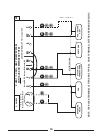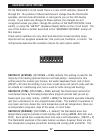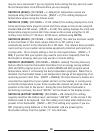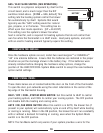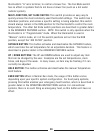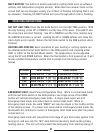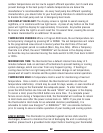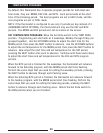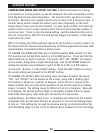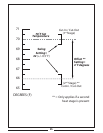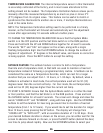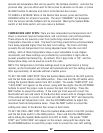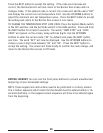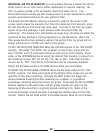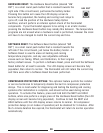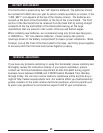
TEMPERATURE SWING AND OFFSET SETTING: A thermostat works by turning
your heating or cooling system on and off whenever the room temperature varies
from the desired set-point temperature. The amount of this variation is called
the swing. Generally your system should cycle on about 3 to 6 times per hour. A
smaller swing number makes the system cycle more frequently, so the room
temperature is more precise and constant. A larger swing number will make the
system remain on for a longer duration each time and decreases the number of
cycles per hour. There is only one Swing setting, and this determines the cut-in
and cut-out points for both the first and second stages (if present), in both Heat
mode and Cool mode.
NOTE: The Swing and Offset settings need to be performed in a timely manner, as
the thermostat will timeout and automatically exit these adjustment screens after
approximately 10 seconds without a button press.
TO CHANGE THE SWING SETTING: Ensure that the System Mode switch is in the
OFF position and the Set Slide switch is in the RUN position. Press and hold the
HOLD button for at least 5 seconds. The words “SET” and “SWING” will appear
on the screen, along with a single flashing digit. Use the UP/DOWN buttons to
change the number value between 1 and 9 (0.25F to 2.25F, in 0.25F degree
increments). Number 1 is the default setting. Press the NEXT button to accept
the swing setting and proceed to the OFFSET setting.
TO CHANGE THE OFFSET: After the Swing value has been accepted, the words
“SET” and “OFFSET” will be shown on the screen, along with a flashing digit.
This setting is shown as a number of degrees, and is similar in nature to the
Swing however this only effects the operation of the second (auxiliary) heating
stage, if present. The setting range for Offset is from 0 to 9 degrees. When set
to 0 degrees, the second heating stage is completely disabled while in regular
Heat mode (Emergency Heat mode will still function for heat pump
configurations). An Offset value from 1 to 9 degrees will determine the number
of degrees from the set point that will be required for the second heating stage
to turn on. This setting can be used to conserve energy in situations where the
second heating stage is more costly to operate when compared to the first stage.
24
ADVANCED FEATURES:



